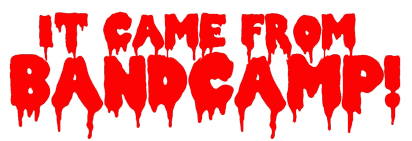2009’s Harry Potter and the Half-Blood Prince solidified director David Yates’s control over the trillion-dollar franchise. The last of the six traditional Potterverse movies, before the strange bifurcated finale, the film had major script problems that not only kept it from being as engaging as its predecessor but forced the following Deathly Hallows Part 1 to go through a series of bizarre narrative contortions in addition to its focus on camping. The film’s score was singled out for particular criticism, with Nicholas Hooper’s subtle music being partly jettisoned by Yates in favor of material from the previous film.
Needless to say, it was a sure bet that a game adaptation would be forthcoming. Sure enough, Harry Potter and the Half-Blood Prince appeared on the release calendars opposite the film. With both the director and the composer of the previous movie returning for the first time since 2002, the game shares a similar sense of continuity, with James Hannigan returning to the series, cementing himself as Jeremy Soule’s successor as Hogwarts’ composer in residence.
It becomes clear from the outset of the album that Hannigan is interested in maintaining thematic continuity between his scores. The opening “Return to Hogwarts” features creative mutations of the composer’s original themes from Order of the Phoenix, with both the friendship theme and the darker menacing/mischief theme combined as a suite. If the new adaptations aren’t quite as soaring as the previous ones, they do an excellent job of tying the scores together in a way Soule never quite managed. The friendship theme is given a full performance at the end of the album as well, moving away from the flighty and optimistic into a quiet and downbeat arrangement that’s incredibly moving.
The themes are less prominent in Hannigan’s sequel outing, integrated more subtly into the music and with significant sections absent them entirely. The album highlight “Race Ginny,” for example, cleverly integrates a fragment of the friendship theme into its midsection while relying on a unique piece to carry its first third. Hannigan seems to be trying to find a middle ground between Williams’ theme-driven music for the films and Soule’s largely themeless work for the first four games; he takes another page from Soule in some other aspects of the score, including some lengthy sections of ambiance across the varied “Wandering” cues.
As before, the music runs the gamut from serious (“More Potions”) to silly (“Fred and George Return”), always keeping that delicate magic touch no matter the setting. The action music is once again a highlight, though perhaps not without some reservations. Tracks such as “Slytherin Combat” soar to triumphant heights unequaled in previous Potter scores, but there is also some weaker music as well, with “Bellatrix” and “Fenrir Battle” recalling some of Soule’s weaker action efforts.
As with the previous game, Hannigan was allowed to adopt some of John Williams’ themes from the original film and a few incidental Soule compositions were recycled. And, as before, all of the Williams adaptations were left off the official album. Luckily, though, Half-Blood Prince also continues the fine production evident in the previous score — the album presentation is superior, with crystal-clear sound, well-mastered tracks, and a pleasing flow with the hideous flaws from the Soule albums a distant memory. Nearly an hour of music is present as well, making this the lengthiest Potter game score to date.
Half-Blood Prince was another extremely strong entry by Hannigan. The composer repeated his previous achievement and wound up turning in music that was superior to Nicholas Hooper’s film score. If the album isn’t quite as consistently excellent as its predecessor, it was still an incredibly strong entry. Astonishingly, Hannigan’s score was released months before the movie or game appeared, the only album in the series thus far to become available so early. Perhaps this, and the incredible weakness of Hooper’s film score, were what led to the official album being pulled only a few months later, around the time that the film hit theaters. All other Potterverse game albums were yakned at the same time, leaving the narrow window of only a few months for fans to acquire the music legally.
Half-Blood Prince would also prove to be the final Potterverse game album of any sort after EA squelched the previous releases. While Hannigan would return for the final two games in the series, their emphasis on third-person action meant that the scores were not only unreleased but far inferior. Hopef












